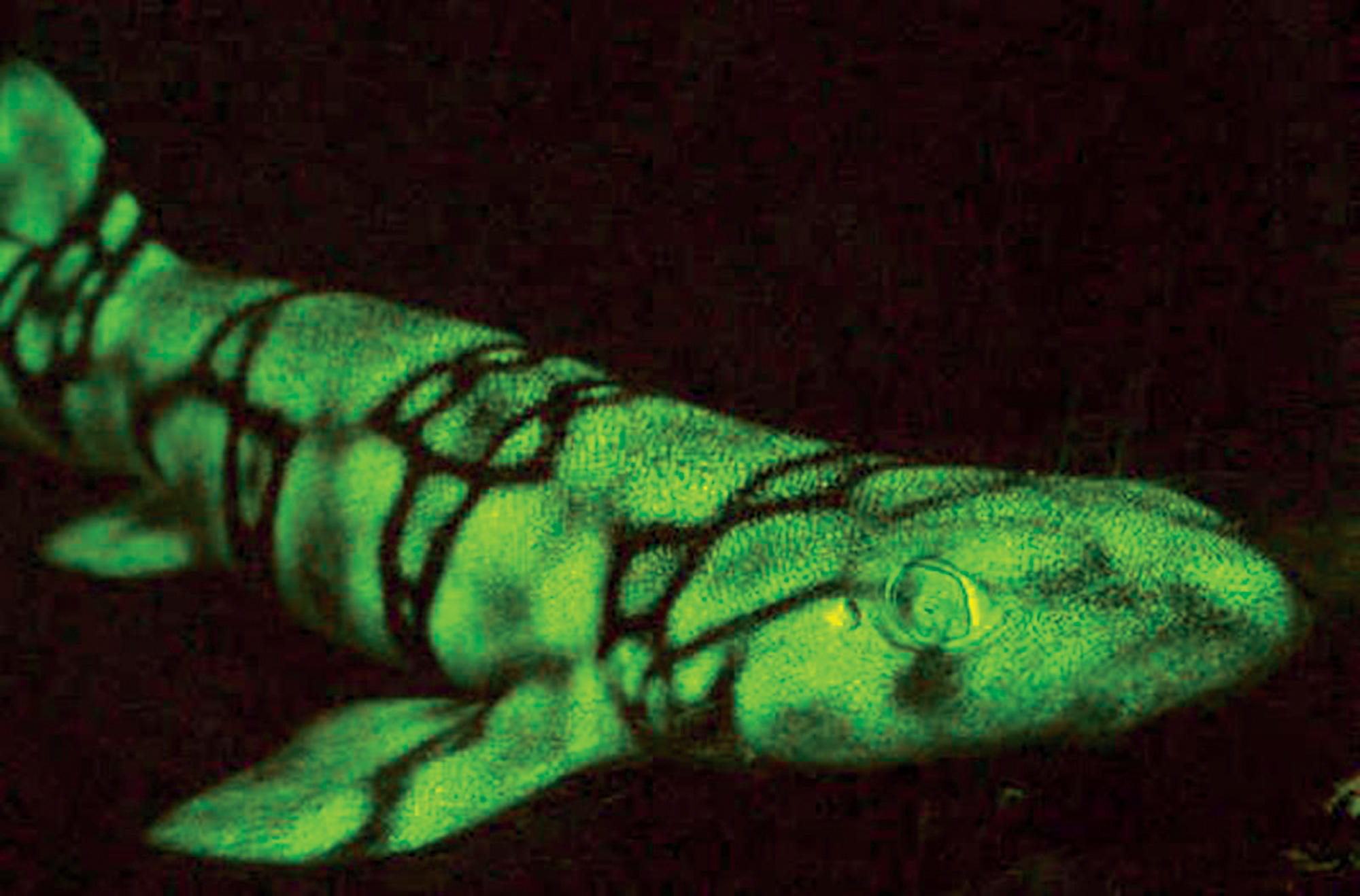For the past two years, a team of marine biologists co-led by Columbia adjunct professor John Sparks has been searching the world’s oceans for creatures that glow in the dark. Their work has revealed that biofluorescence is much more common than previously recognized. To date, Sparks and his colleagues have identified nearly two hundred species of eels, sharks, stingrays, scorpionfish, and other deep-sea organisms whose skin can absorb faint amounts of light, transform it, and then emit it in brighter colors — typically neon reds, yellows, oranges, greens, or pinks.
Now Sparks and his team members, several of whom are affiliated with the American Museum of Natural History, have found the strongest evidence yet in support of a popular theory among marine biologists: that fish use biofluorescence to communicate with members of their own species. In a series of experiments using a special camera modeled on the eye of a catshark — a small shark whose optical anatomy they investigated in painstaking detail — the scientists have shown that the fish are uniquely adept at seeing the neon-green light that other catsharks radiate.
“The catsharks can see other colors, too, but not as vividly,” says Sparks, who is a curator of ichthyology at the museum and who is affiliated with Columbia’s Department of Ecology, Evolution, and Environmental Biology. Conversely, he suspects that other fish can see the catsharks’ neon-green glow, but not as well as fellow catsharks can see it.
Over the years, biologists have offered many hypotheses to explain why some fish may have evolved an ability to see their own colors; they say it could help them identify mates, follow each other when traveling in schools, or avoid accidentally attacking one another. Sparks and his colleagues, by observing the social behaviors of catsharks through the lens of their special camera, are now exploring these and other possibilities.
“A major challenge in studying biofluorescent fish is that they tend to live in deep waters that are quite dark, and to glow in colors that are outside the spectrum of light that is visible to the human eye,” says Sparks. “That’s made it very difficult to observe them in the wild. But now, for the first time, we can go down there and experience the world through their eyes.”



